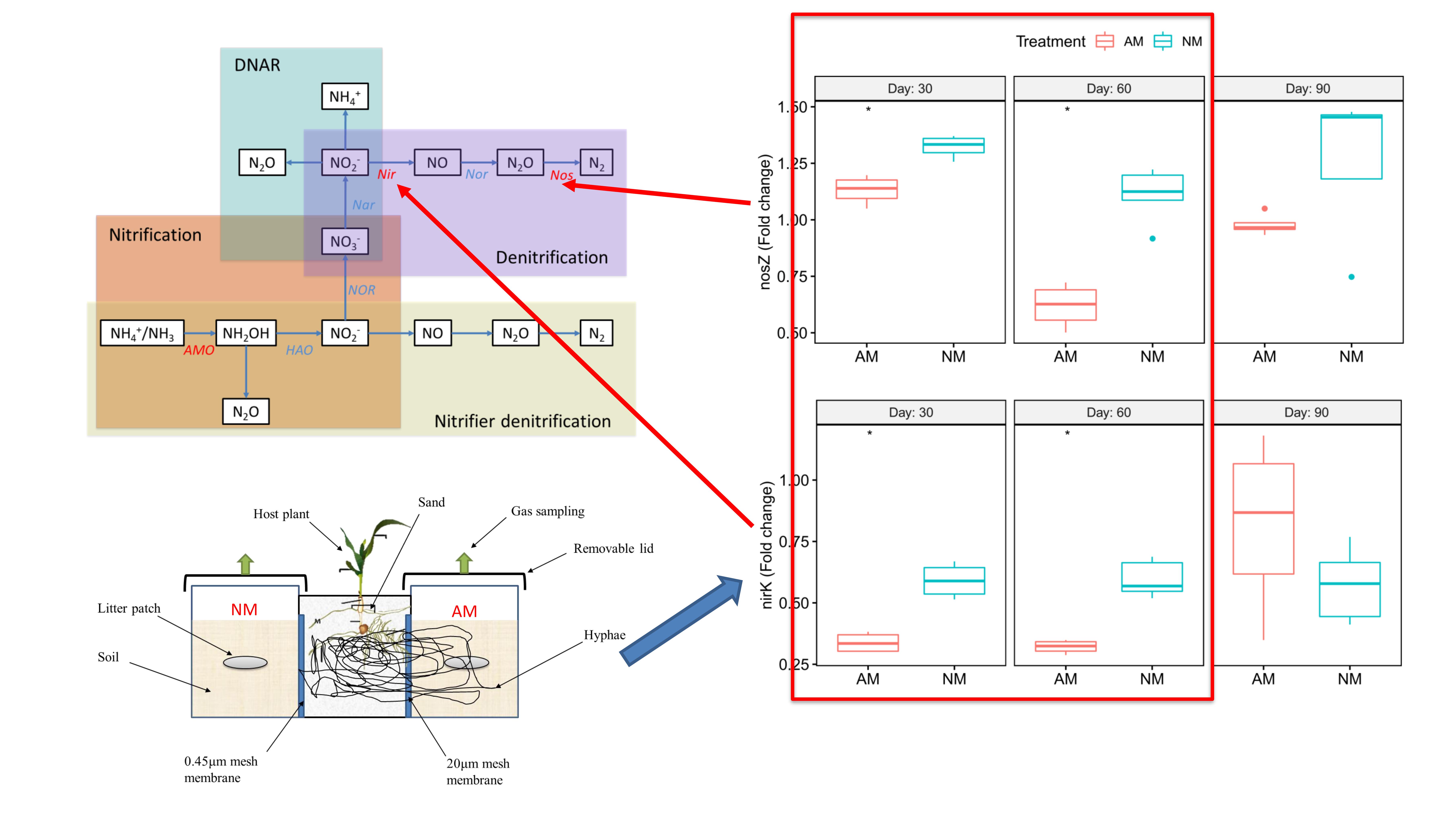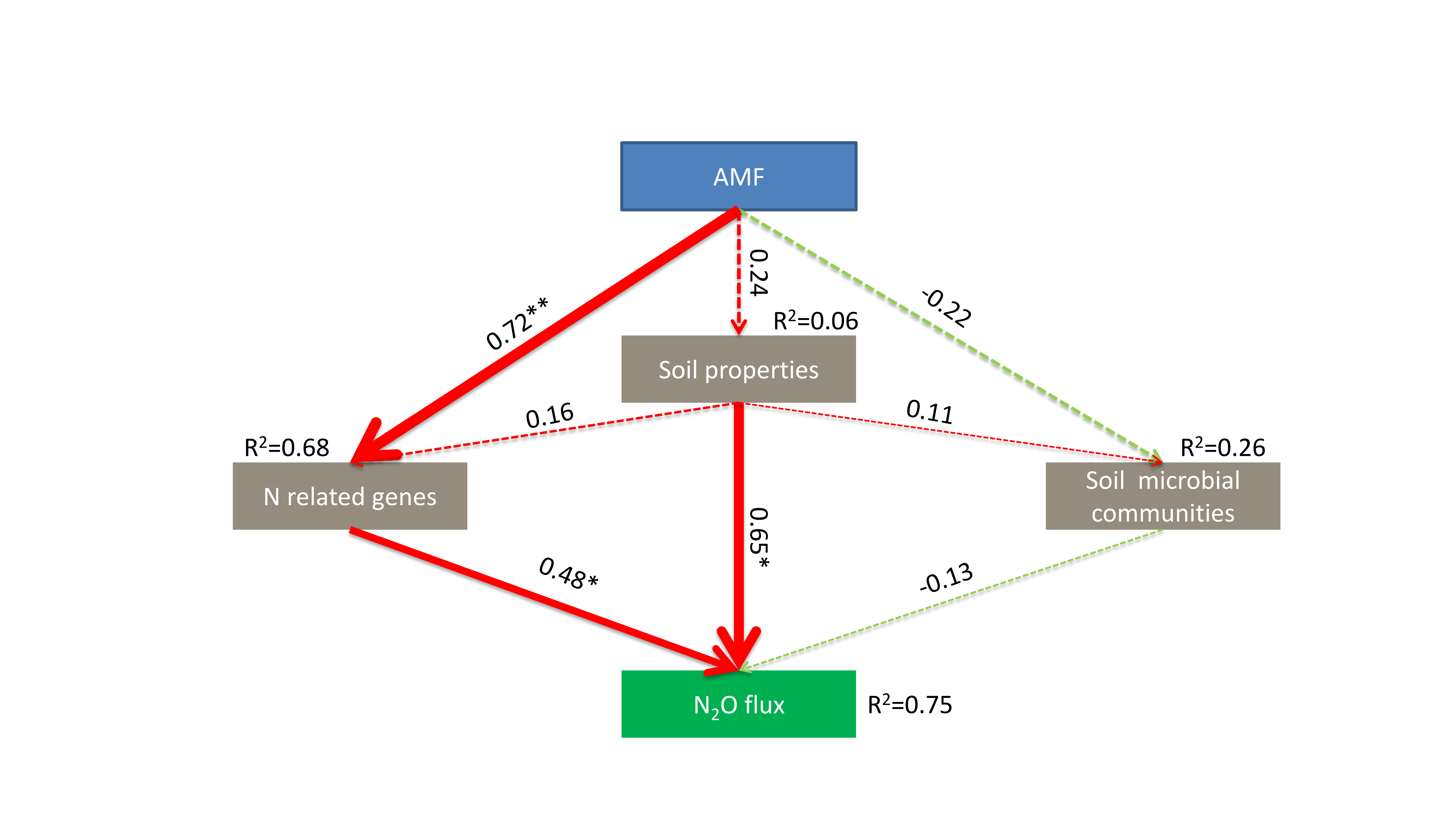Nitrous oxide (N2O) is one of the most important greenhouse gas causing global warming. At the same time, N2O also participates in many photochemical reactions in the atmosphere, destroying the atmospheric ozone layer. Compared to the Carbon dioxide (CO2) content in the atmosphere, the relative content of N2O is much lower. However, its warming potential per unit mass is 298 times that of CO2. In terrestrial ecosystems, soil is an important source for N2O emissions. The N2O in the soil mainly comes from the transformation of available nitrogen mediated by various microorganisms.
Arbuscular mycorrhizal (AM) fungus is a widely distributed soil fungus in terrestrial ecosystems, which can form a symbiotic relationship with more than 75% of plant roots. AM fungi can enhance the nutrient uptake of the host plant through its hyphae network, improve the host plant's stress resistance, and improve the physical and chemical properties of the soil. It is generally believed that AM fungi themselves do not have the saprophyte ability and are unlikely to be direct producers or consumers of N2O, but AM fungi have the ability to absorb active nitrogen in the soil and interact with other soil microorganisms to affect the production of N2O from the soil.
In order to better explore how AM fungi regulate the production and emission of N2O from the soil, researchers from the Centre for Mountain Futures of the Kunming Institute of Botany, Chinese Academy of Sciences (KIB/CAS), based on indoor experiments, set up a microcosm experiment under controlled environment to address this knowledge gap. In this experiment, two independent soil environments were established, which were either allowed (AM) or prevented (NM) access by AMF hyphae. Soil physicochemical properties, N2O flux, the diversity of bacterial communities, and the abundance of key genes responsible for N2O production were assessed in both treatments over three months. The results showed that the presence of AMF significantly decreased N2O emissions from agricultural soils in the 1st month, and the abundance of key genes responsible for denitrification (nirK and nosZ) significantly decreased in AM treatments, indicating that the regulation of N2O emissions is transmitted by AMF-induced changes in the denitrification process. A structural equation model further revealed that AMF indirectly influenced N2O emissions by altering the abundance of N metabolism-related genes, rather than by altering soil chemical properties or the diversity of bacterial communities. Thus, the research proposed a possible mechanism by which AMF can regulate denitrification activities and therefore N2O emissions from agricultural soils.
The major results were published online under the title "Arbuscular mycorrhizal fungi potentially regulateN2Oemissions from agricultural soils via altered expression of denitrification genes" in Science of The Total Environment. GUI Heng, an assistant researcher at the Kunming Institute of Botany, Chinese Academy of Sciences, is the first author of the paper, and Prof. XU Jianchu is the corresponding author of the paper. This work was funded by the Yunnan Fundamental Research Projects (grant no.: 2019FB063) and the National Natural Science Foundation of China (NSFC Grant 32001296).


Contact:
YANG Mei
General Office
Kunming Institute of Botany, CAS
email: yangmei@mail.kib.ac.cn
(Editor: Yang Mei)




